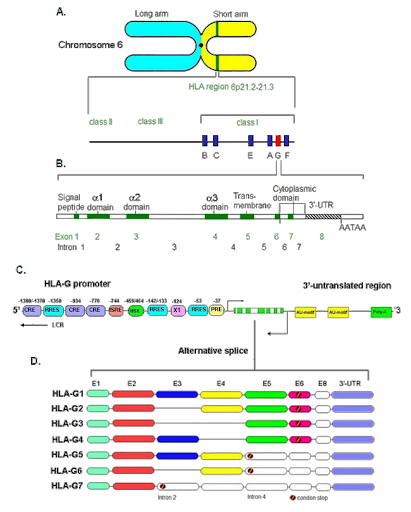
Histocompatibility complex gene group
 المؤلف:
Genetics Home Reference
المؤلف:
Genetics Home Reference
 المصدر:
Help Me Understand Genetics
المصدر:
Help Me Understand Genetics
 الجزء والصفحة:
الجزء والصفحة:
 16-10-2020
16-10-2020
 1703
1703
Histocompatibility complex gene group
The histocompatibility complex gene group provides instructions for making a group of related proteins known as the human leukocyte antigen (HLA) complex. The HLA complex helps the immune system distinguish the body's own proteins from proteins made by foreign invaders such as viruses and bacteria.
HLA is the human version of the major histocompatibility complex (MHC), a gene group that occurs in many species. In humans, the MHC complex consists of more than 200 genes located close together on chromosome 6. Genes in this complex are categorized into three basic groups: class I, class II, and class III.
Humans have three main MHC class I genes, known as HLA-A, HLA-B, and HLA-C. The proteins produced from these genes are present on the surface of almost all cells. On the cell surface, these proteins are bound to protein fragments (peptides) that have been exported from within the cell. MHC class I proteins display these peptides to the immune system. If the immune system recognizes the peptides as foreign (such as viral or bacterial peptides), it responds by triggering the infected cell to self-destruct.
There are six main MHC class II genes in humans: HLA-DPA1, HLA-DPB1, HLADQA1, HLA-DQB1, HLA-DRA, and HLA-DRB1. MHC class II genes provide instructions for making proteins that are present almost exclusively on the surface of certain immune system cells. Like MHC class I proteins, these proteins display peptides to the immune system.
The proteins produced from MHC class III genes have somewhat different functions; they are involved in inflammation and other immune system activities. The functions of some MHC genes are unknown.
Histocompatibility complex genes have many possible variations, allowing each person's immune system to react to a wide range of foreign invaders. Some histocompatibility complex genes have hundreds of identified versions (alleles), each of which is given a particular number (such as HLA-B27). Closely related alleles are categorized together; for example, at least 40 very similar alleles are subtypes of HLA-B27. These subtypes are designated as HLA-B*2701 to HLAB* 2743.
More than 100 diseases have been associated with different alleles of histocompatibility complex genes. For example, the HLA-B27 allele increases the risk of developing an inflammatory joint disease called ankylosing spondylitis. Many other disorders involving abnormal immune function and some forms of cancer have also been associated with specific HLA alleles. However, it is often unclear what role histocompatibility complex genes play in the risk of developing these diseases.
The HUGO Gene Nomenclature Committee (HGNC) provides an index of gene groups (https://www.genenames.org/data/genegroup/#!/group/588) and their member genes.

References
Khan MA, Mathieu A, Sorrentino R, Akkoc N. The pathogenetic role of HLAB27
and its subtypes. Autoimmun Rev. 2007 Jan;6(3):183-9. Epub 2006 Dec 8.
Review. PubMed: 17289555 (https://www.ncbi.nlm.nih.gov/pubmed/17289555).
Marsh SG, Albert ED, Bodmer WF, Bontrop RE, Dupont B, Erlich HA, Geraghty
DE, Hansen JA, Hurley CK, Mach B, Mayr WR, Parham P, Petersdorf EW,
Sasazuki T, Schreuder GM, Strominger JL, Svejgaard A, Terasaki PI, Trowsdale
J. Nomenclature for Factors of the HLA System, 2004. Hum Immunol.
2005 May;66(5):571-636. Epub 2005 Mar 3. PubMed: 15935895 (https://
www.ncbi.nlm.nih.gov/pubmed/15935895).
Shiina T, Inoko H, Kulski JK. An update of the HLA genomic region,
locus information and disease associations: 2004. Tissue Antigens. 2004
Dec;64(6):631-49. Review. PubMed: 15546336 (https://www.ncbi.nlm.nih.gov/
pubmed/15546336).
 الاكثر قراءة في المناعة
الاكثر قراءة في المناعة
 اخر الاخبار
اخر الاخبار
اخبار العتبة العباسية المقدسة


